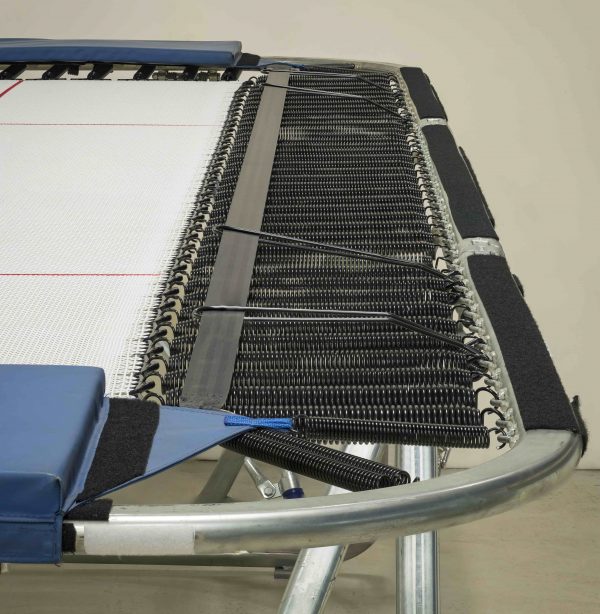Learn how to equalize and find soft springs
There are a number of reasons that a trampoline could pull to one side. The usual suspects are the springs, and the frame not being level.
The first thing to do is to make sure that the frame is level. Measure end to end in the middle at each side as well as near each end.
Adjust chains to get the middle level first. Later adjust the leg braces to get the hinge to end portions of the frame level. Also make sure the bed is level side to side in each of these areas.
The next thing to check is frame issues, particularly with older frames. Watch the frame move as an athlete jumps, comparing sides at the middle.
There could be problems with old hinges or even the leg sleeves breaking off the midsections. If one floor protector slides as it is worn out, while the others do not, this could be an issue. There might also be other adjustment issues with the frame appearing level, but with one of the four chains being loose with no athlete on the trampoline. When the athlete lands the chain tightens up so the tramp under load is not level. (Snug up that chain, making sure not to overdo it.)
Look down the length of the bed at the centre red line. If it moves over at one point, look for soft springs on the side the bed pulls to at that point, and if you find some switch them with side springs near the corners. (Make sure you don’t eventually have so many very soft springs near the corners that the corners are too soft.)

Next go to the ends of the bed and look for soft springs. This is a more likely cause, and harder to see with the naked eye. Basically what happens is that despite the bed being twice as long as it is wide, there are more frequent crashes right near the springs at the ends, than along the sides. This is partly the “safety” of the end decks and partly the nature of our sport with travel being caused primarily by rotational errors. What can happen is that due to some end landings a few springs to one side of the centre line can become softer than they used to be.
Now when an athlete jumps the foot supported by the soft springs sinks further than his other foot. Check both ends and move any soft springs to the sides near the corners, which is the lowest wear area for a trampoline. However if they are significantly softer than the other springs you have, you may need to replace some springs.

